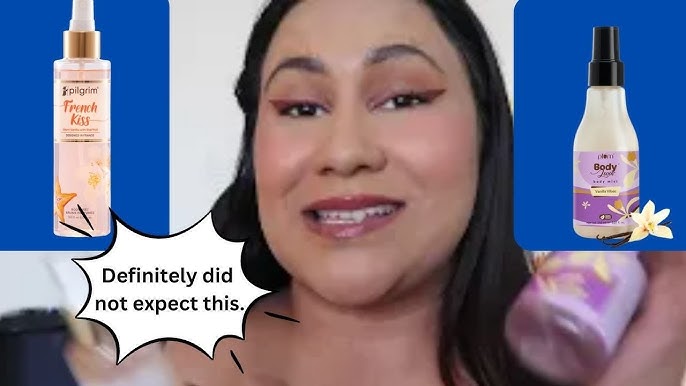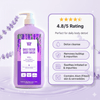Plum vs Pilgrim: Which is Better for Your Skin? A Complete Guide

When it comes to skincare, everyone wants the best products that suit their skin type and needs. Two brands that have been making waves in the beauty industry are Plum and Pilgrim. Both brands offer a variety of skincare products, but how do they stack up against each other? Are they really as good as people claim on platforms like Reddit and Quora? Let’s dive deep into this comparison to find out which is better: Plum vs Pilgrim.
Plum vs Pilgrim: Which is Better?
Brand Overview: Plum
Plum is an India-based skincare brand that has quickly gained popularity for its focus on clean, vegan, and cruelty-free beauty. The brand is known for its plant-based ingredients, making it suitable for all skin types, including sensitive skin.
Key Features:
- Vegan & cruelty-free
- Free from parabens, sulfates, and phthalates
- Emphasis on eco-friendly packaging
Brand Overview: Pilgrim
Pilgrim, another popular skincare brand in India, also offers clean beauty products. Pilgrim focuses on providing effective skincare using natural ingredients from around the world, such as Korean and Brazilian extracts. It is also cruelty-free and strives to make skincare accessible for all.
Key Features:
- Free from harmful chemicals
- Korean-inspired formulations
- Cruelty-free and budget-friendly
Plum or Pilgrim for Oily Skin?
If you have oily skin, both Plum and Pilgrim offer solutions. Let’s take a closer look at which brand might be more suitable for you.
-
Plum for Oily Skin: Plum has a variety of oil-free products, like the Green Tea range, which is specifically designed for oily and acne-prone skin. The range includes a cleanser, toner, and gel moisturizer, all packed with green tea extract that helps control oil production and fight acne.
-
Pilgrim for Oily Skin: Pilgrim’s Vitamin C range is great for oily skin types. Their Vitamin C Face Wash and Moisturizer help brighten the skin while controlling excess oil. Additionally, Pilgrim’s Salicylic Acid Face Wash works wonders for oily and acne-prone skin, clearing out clogged pores.
Conclusion for Oily Skin: If you’re looking for a lightweight, oil-controlling regimen, both brands work well. However, Plum is a standout if you're specifically looking for anti-acne treatments.
Plum vs Pilgrim for Acne: Which One is Better?
Acne is a common concern, especially for those with oily or combination skin. So, which brand offers the best acne-fighting solutions?
-
Plum for Acne: Plum’s Green Tea Range is the brand’s most recommended for acne-prone skin. The combination of green tea extract and salicylic acid helps to fight acne, reduce inflammation, and keep your skin clear and healthy.
-
Pilgrim for Acne: Pilgrim’s Salicylic Acid Face Wash is formulated with ingredients like tea tree oil and witch hazel, which help combat acne. The brand also offers products like the Pilgrim BHA Serum, which helps to reduce acne scars and prevent breakouts.
Conclusion for Acne: Both brands offer fantastic acne-targeting products, but Plum’s Green Tea range stands out due to its deep cleansing properties and anti-inflammatory benefits.
Minimalist vs Pilgrim: Which is Better?
When comparing Minimalist and Pilgrim, it’s important to note that both brands focus on clean beauty, but they cater to different skincare needs.
-
Minimalist is known for its science-backed formulations that include active ingredients like hyaluronic acid, niacinamide, and retinol. If you’re looking for specific skincare solutions, Minimalist could be the go-to choice.
-
Pilgrim, on the other hand, blends ingredients from around the world (such as Korean beauty secrets) with a focus on gentle yet effective skincare. If you prefer a more holistic, natural approach, Pilgrim might be more suitable.
Conclusion: Minimalist is great for targeted treatments, while Pilgrim excels in providing gentle and effective skincare that works for a variety of skin types.
Are Pilgrim Products Safe? Possible Side Effects
When it comes to safety, both Plum and Pilgrim strive to formulate products free from parabens, sulfates, and other harmful chemicals. However, like with any skincare product, side effects may occur.
Pilgrim Products Side Effects:
- Some users have reported mild irritation or breakouts when using Pilgrim’s products, especially those with sensitive skin.
- Pilgrim’s Vitamin C and Salicylic Acid products can cause dryness or redness for those with dry or very sensitive skin.
It’s always a good idea to patch test products before incorporating them into your routine.
Is Pilgrim a Good Brand for the Face?
Yes, Pilgrim is considered a good brand for facial care. The brand has a range of products tailored for different skin concerns, including anti-aging, acne treatment, and brightening. Pilgrim's Face Masks and Face Serums are highly praised for their effectiveness and affordability.
Plum vs Pilgrim: Which Brand Gets Better Reviews from Dermatologists?
Dermatologists often recommend products based on their ingredient lists, efficacy, and skin compatibility. Both Plum and Pilgrim have received positive reviews for being safe and effective on most skin types.
However, dermatologists tend to appreciate Plum's Green Tea Range for its anti-acne and anti-inflammatory properties, as well as Pilgrim’s Vitamin C Range for its brightening and anti-aging benefits.
Conclusion: Plum is often preferred for acne treatment, while Pilgrim is great for brightening and anti-aging.
Final Verdict: Plum or Pilgrim, Which is Better for You?
In the debate of Plum vs Pilgrim, the choice really depends on your skin type and concerns:
- For oily and acne-prone skin, Plum’s Green Tea Range may be the better choice due to its oil-controlling and anti-acne properties.
- For brightening and anti-aging, Pilgrim’s Vitamin C and BHA products offer effective solutions.
Both brands are great for skincare, and their products are clean, cruelty-free, and safe for most skin types. Ultimately, it all comes down to your personal skincare goals.
So, which one is better? It’s all about finding what works best for your unique skin!







Oile skin